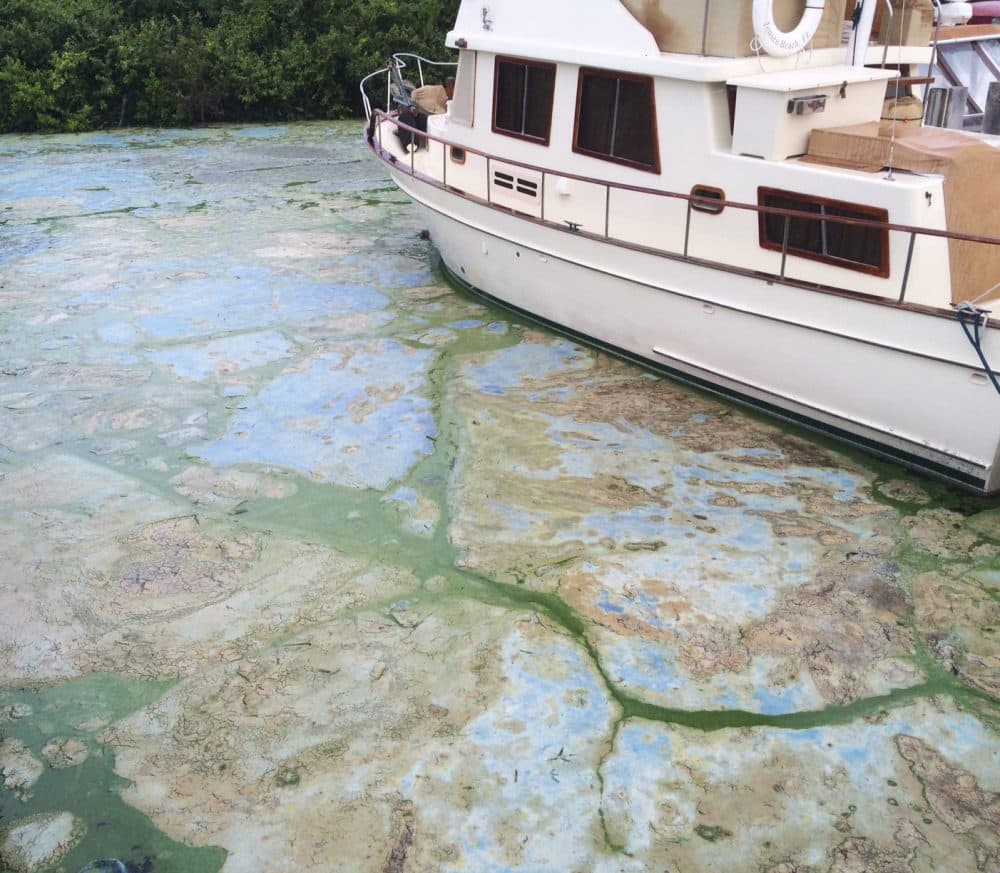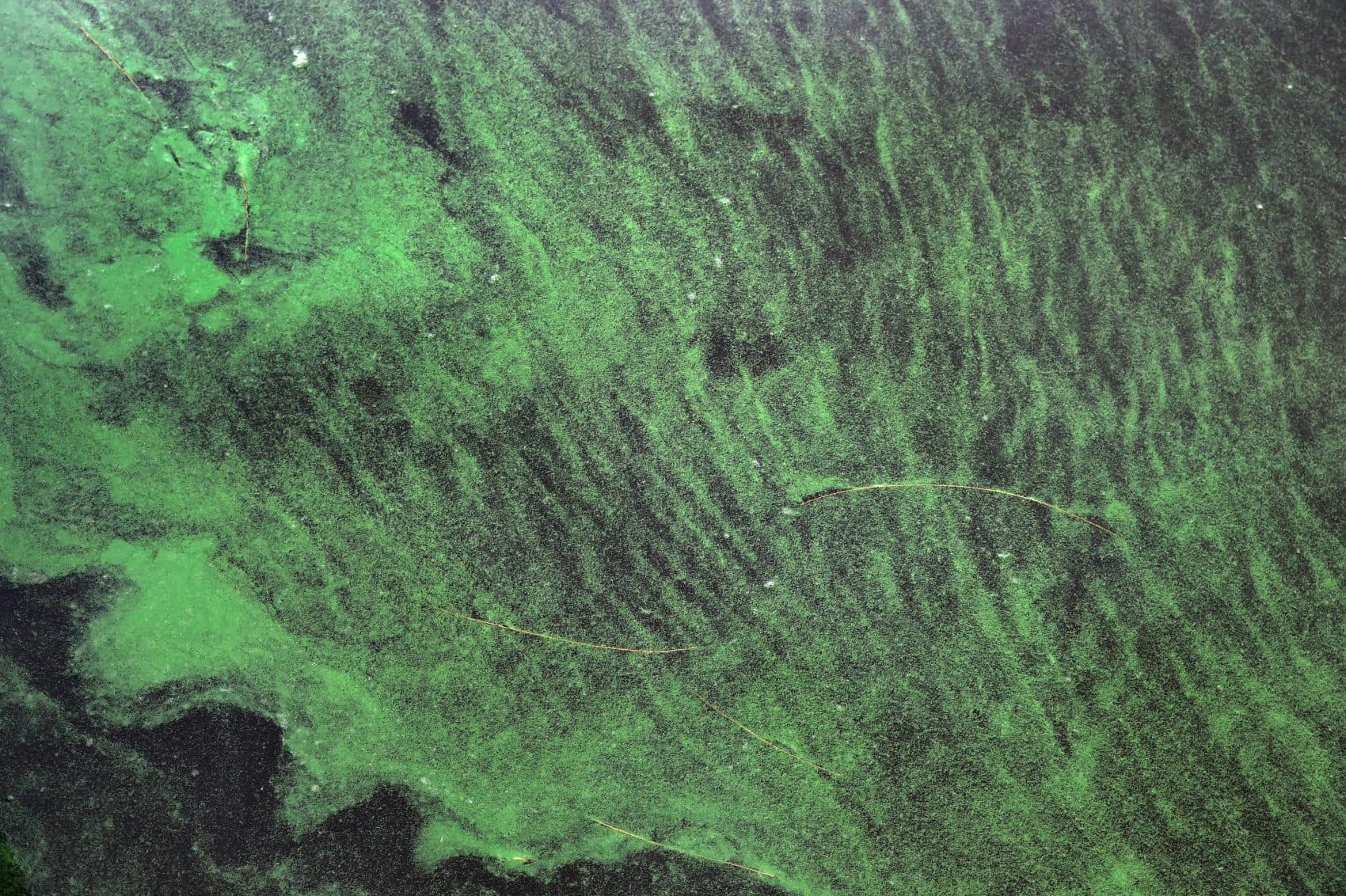Advertisement
Toxic, Foul-Smelling Algae Oozes Over Florida's Treasure Coast

Gov. Rick Scott declared a state of emergency in four South Florida counties after a massive bloom of cyanobacteria, commonly called blue-green algae, seeped from polluted Lake Okeechobee into waterways throughout the Sunshine State's "Treasure Coast."
The massive algal bloom emits a foul odor and can cause skin and respiratory problems for people nearby. As a result, many beaches and businesses in the area were closed over the Fourth of July holiday weekend.
Here & Now's Jeremy Hobson asks environmental biogeochemist Bill Louda what caused the toxic bloom, what can be done to fix it, and how Florida can prevent future outbreaks from getting worse.
Interview Highlights: Bill Louda
On where and how the bloom originated
"The bloom itself is in Lake Okeechobee that's where it started. It's a freshwater organism called microcystis aeruginosa, it’s actually a cyanobacteria, but everybody calls it blue-green algae because that's what it used to be called. It loves warm temperatures and what's happened this year is we've had basically, temperature-wise, an early spring. There's a lot of nutrients in the water coming down from the Kissimmee River and from the agriculture around Lake Okeechobee.
So it’s got the two things it likes, warm temperature and a lot of nutrients — fertilizer, if you will. And what's going on now, is we had so much rain, so we're getting more nutrients put into the lake, more water put into the lake."
On whether or not the bloom is purely man made
"Yes and no. This goes all the way to Genghis Khan reporting that his soldiers died after drinking some green water. It does happen naturally, but the extent and the repeat of it is what man has done. We've taken a small natural event and just fed it, overfed it and let it go. It's the nutrients that are allowing the huge masses of this blue, 'blue-green algae' to grow and become a real, real problem."

On how the algae impacts wildlife and humans
"The bloom microcystis aeruginosa can be or not be toxic, this one happens to be toxic. It just depends upon if a gene gets turned on. Animals or anything that eats the algae directly can be killed or very strongly hurt.
The effects on man, hopefully we're not eating it, but the water is closed because it causes skin irritations, it can cause severe eye irritations, respiratory distress just from it being atomized into the atmosphere as the wind blows and it comes off the water. Now, what can affect man is things like shellfish, oysters, clams, they're filter feeders. So now if man eats the oysters and the lobsters, yes he can die. People keep asking me, 'How long is this going to last?' I say, 'Do you have a coin? Flip it.' No one knows. It's extremely hard to predict."
On pitfalls with proposed solutions
"A lot of people say, ‘Well what if we just collect it?’ But in collecting it, you're exposing a lot of people to the toxins, the people that are working with it, and where are you going to put it? If you collect it all and pile it up, then the toxins may drain down into someone's well field for water, so that's a hard one. We've got chemicals that can kill it, but it's going to kill all the other plant life and phytoplankton that the fish rely on and everything else in the ecosystem."
On lessons to be learned
"We've had some wake-up calls in the past, this is a big one. And what we have to do is stop the pollution of nutrients. We've got to stop the runoff of nitrogen and phosphorous. Then the other one is the septic tanks. A lot of conditions are coming together and we have to look at all of them individually."
Guest
J. William Louda, environmental biogeochemist at Florida Atlantic University.
This article was originally published on July 08, 2016.
This segment aired on July 8, 2016.